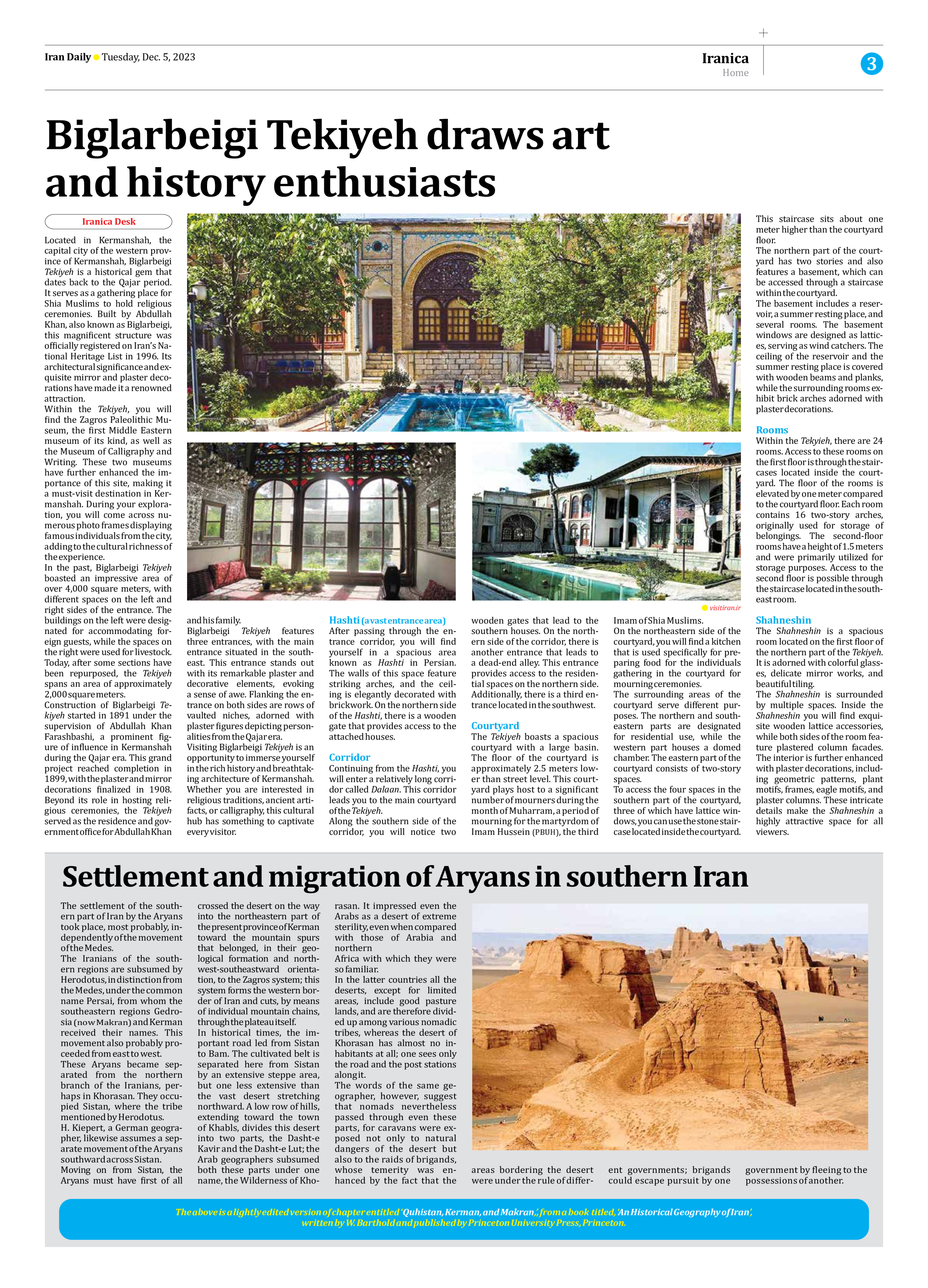
Settlement and migration of Aryans in southern Iran
The settlement of the southern part of Iran by the Aryans took place, most probably, independently of the movement of the Medes.
The Iranians of the southern regions are subsumed by Herodotus, in distinction from the Medes, under the common name Persai, from whom the southeastern regions Gedrosia (now Makran) and Kerman received their names. This movement also probably proceeded from east to west.
These Aryans became separated from the northern branch of the Iranians, perhaps in Khorasan. They occupied Sistan, where the tribe mentioned by Herodotus.
H. Kiepert, a German geographer, likewise assumes a separate movement of the Aryans southward across Sistan.
Moving on from Sistan, the Aryans must have first of all crossed the desert on the way into the northeastern part of the present province of Kerman toward the mountain spurs that belonged, in their geological formation and northwest-southeastward orientation, to the Zagros system; this system forms the western border of Iran and cuts, by means of individual mountain chains, through the plateau itself.
In historical times, the important road led from Sistan to Bam. The cultivated belt is separated here from Sistan by an extensive steppe area, but one less extensive than the vast desert stretching northward. A low row of hills, extending toward the town of Khabls, divides this desert into two parts, the Dasht-e Kavir and the Dasht-e Lut; the Arab geographers subsumed both these parts under one name, the Wilderness of Khorasan. It impressed even the Arabs as a desert of extreme sterility, even when compared with those of Arabia and northern
Africa with which they were so familiar.
In the latter countries all the deserts, except for limited areas, include good pasture lands, and are therefore divided up among various nomadic tribes, whereas the desert of Khorasan has almost no inhabitants at all; one sees only the road and the post stations along it.
The words of the same geographer, however, suggest that nomads nevertheless passed through even these parts, for caravans were exposed not only to natural dangers of the desert but also to the raids of brigands, whose temerity was enhanced by the fact that the areas bordering the desert were under the rule of different governments; brigands could escape pursuit by one government by fleeing to the possessions of another.
The above is a lightly edited version of chapter entitled ‘Quhistan, Kerman, and Makran,’, from a book titled, ‘An Historical Geography of Iran’,
written by W. Barthold and published by Princeton University Press, Princeton.







